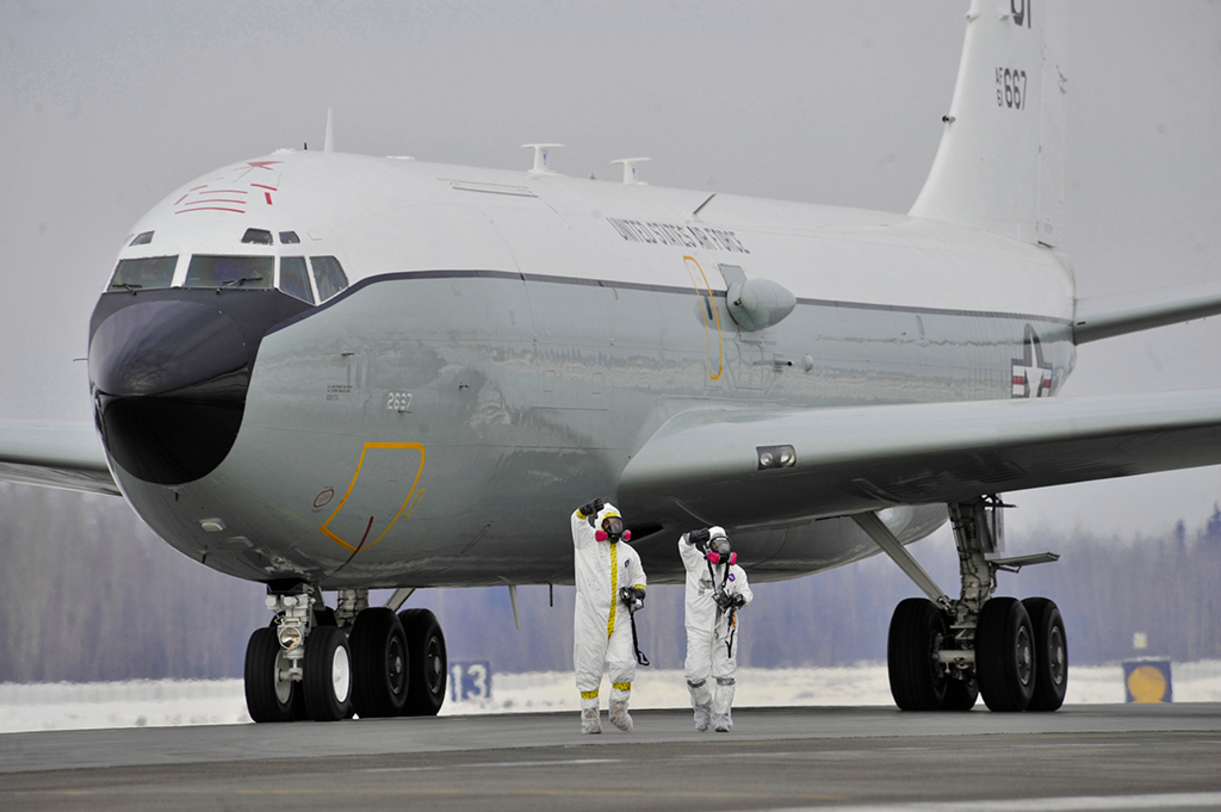https://sputniknews.com/military/201703121051499938-us-russia-inf-violations/
On Wednesday, the United States once again accused Russia of violating the Intermediate Nuclear Forces (INF) Treaty, an allegation repeatedly denied by Moscow.
Speaking in Congress, a senior US general said that Russia has allegedly deployed prohibited cruise missiles with a range of 500-5,000 kilometers.
"We believe that the Russians have deployed a land-based cruise missile that violates the spirit and intent of the Intermediate Nuclear Forces Treaty," Gen. Paul Selva, the vice chairman of the Joint Chiefs of Staff, told the House Armed Services Committee.
The general added that by deploying prohibited missiles, Moscow poses a threat to "NATO and to facilities within the NATO area of responsibility."
Earlier,
the US had accused Russia of developing a ground-based analogue of the Kalibr-NK cruise missile and concealing the capabilities of the Iskander tactical missile system.
In mid-February, American senators also submitted legislation to toughen Washington’s stance on the INF Treaty, presuming funds for active defense measures and a retaliation strike. Moreover, the proposed bill would also enable transfer of INF missile systems to US allies.
Commenting on the allegations, Viktor Ozerov, the chairman of the Russian upper house of parliament’s defense committee,
said that Russia has not violated the agreement.
"Russia strictly observes the agreement signed by Mikhail Gorbachev in 1987, despite the fact that, according to our evaluations, the agreement was not in the interests of the USSR and then Russia. In particular, it should be taken into account that the US has deployed missile systems and missile defenses in several European countries," Ozerov said.
Aggressive Trend
Moscow and Washington have occasionally exchanged accusations of violating the INF Treaty. From time to time, Washington’s claims sound absurd; for example,
calling to expand the treaty to include the RS-26 Yars-M mobile missile system, which possesses an operational range of 6,000-11,000 km.
The system, which has nothing to do with short-range and medium-range missiles, is expected to enter service with the Russian Strategic Forces in 2017. The missile is believed to be imperceptible for existing and advanced missile defenses.
"Probably, the US is concerned with its own exposure to a retaliation strike by the Russian Strategic Forces, rather than the security of its European allies. As a result, Washington has been engaged in complicated maneuvers, including inflating the mythical 'Russian threat,' strengthening NATO, expanding it to the east and accusing Russia of violating the INF Treaty. At the same time, the US continues to deploy its missiles across Europe," Russian journalist and political commentator Alexander Khrolenko
wrote in a piece for RIA Novosti.
According to the author, all of the above further contribute to the familiar American trend of resolving “geopolitical tensions by force" bypassing international law and the UN Security Council.
"However, there cannot be 'shock and awe' for Russia efficiently countering the pressure from the US and NATO. Probably, Washington’s allegations against Moscow [over INF Treaty violations] are only a façade for aggressive plans," Khrolenko suggested.
Compromise
The Intermediate-Range Nuclear Forces Treaty is an indefinite agreement signed between the US and the Soviet Union in 1987. It came into effect on June 1, 1988.
The treaty prohibited the production, testing and deployment of ground-based ballistic and cruise missiles, with ranges of 500-1,000 km (short-range) and 1,000-5,000 (medium-range). It also banned all launchers and ground-based missiles with a range of 500-5,500 km.
By summer 1991, the USSR eliminated 1,846 missiles systems, while the US – 846 systems.
A longtime standoff between Washington and Moscow in the mid-1970s resulted in the creation of advanced missile target seekers, including laser and infrared systems. They guaranteed an unprecedented accuracy of a missile strike. In 1974, the US codified its limited nuclear war doctrine in the national nuclear strategy and began upgrading its forward bases' missile defense system for European allies.
In 1977, Moscow responded with upgrading its arsenal of heavy intercontinental ballistic missiles with scattering warheads and deployed RSD-10 medium-range missiles to the Western border.
In 1983, the NATO Council decided to deploy 572 Pershing II missiles to Europe. The missile had a flight time to the target of 6-8 minutes.
Finally, a compromise was reached in 1987 between the US and the USSR, after years of negotiations.
What’s Next?
The deployment of US Mk-41 launchers to Poland and Romania was a major violation of the INF Treaty. Those systems can be used for launching Tomahawk medium-range missiles.
Currently, the guidance system of the Pershing II is used in the Hera target missile, which can be qualified as a ground-based medium-range ballistic missile. The Pentagon continues missile defense tests and intensifies the development of heavy attack drones and cruise missiles.
"The US says that the modernization of its nuclear triad is not aimed at a new arms race. However, such efforts should have a practical goal. And if they are directed against Moscow the US should consider the modernization of Russia’s nuclear potential," Khrolenko concluded.








